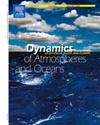A robust stepwise jump in the Arctic wintertime warming in 2005 coherent with the increased clear-sky downward longwave radiation flux
IF 1.9
4区 地球科学
Q2 GEOCHEMISTRY & GEOPHYSICS
引用次数: 0
Abstract
In some areas of the Arctic, the Earth's surface temperature and near-surface air temperature are rising faster than in others. The purpose of this study is to identify, based on the ERA5 climate reanalysis data, the spatiotemporal structure of climatic changes in the Arctic during 1959–2022. The main emphasis is put on the following three parameters: mean surface clear-sky downward longwave radiation flux, near-surface air temperature, and skin temperature. A statistical model of stepwise changes was applied to the time series of the studied characteristics at each grid point of the entire Arctic (67°N–90°N). The results obtained indicate a close relationship between all parameters in the winter season. The dominant year of stepwise changes in the Arctic is 2005. Moreover, it is precisely this transition from one state of the climate system to another that is statistically significant over a large territory, which is located mainly in the Eastern Hemisphere. The time series averaged over the identified areas are highly correlated with each other, and the year 2005 characterizes the change from a sharp increase in values to their variability without a pronounced trend. The available satellite observations fully confirm the temporal structure of the stepwise changes for the studied parameters and largely confirm its spatial structure. Thus, the clear-sky downward longwave radiation flux is one of the leading factors in the formation of the thermal regime of the Arctic.
2005 年北极冬季气候变暖的强劲跃升与晴空向下长波辐射通量的增加相一致
在北极的一些地区,地球表面温度和近地面气温的上升速度比其他地区快。本研究的目的是根据ERA5气候再分析数据,确定1959-2022年间北极地区气候变化的时空结构。研究重点是以下三个参数:平均表面晴空向下长波辐射通量、近地面气温和皮肤温度。对整个北极地区(北纬 67 度-北纬 90 度)每个网格点的所研究特征的时间序列应用了逐步变化统计模型。结果表明,冬季所有参数之间的关系密切。北极地区阶跃变化的主要年份是 2005 年。此外,正是这种从气候系统的一种状态到另一种状态的转变,在主要位于东半球的大片地区具有显著的统计学意义。所确定地区的时间序列平均值彼此高度相关,2005 年的特点是从数值急剧增加到无明显趋势的变化。现有的卫星观测完全证实了所研究参数的阶跃变化的时间结构,并在很大程度上证实了其空间结构。因此,晴空向下长波辐射通量是形成北极热制度的主要因素之一。
本文章由计算机程序翻译,如有差异,请以英文原文为准。
求助全文
约1分钟内获得全文
求助全文
来源期刊

Dynamics of Atmospheres and Oceans
地学-地球化学与地球物理
CiteScore
3.10
自引率
5.90%
发文量
43
审稿时长
>12 weeks
期刊介绍:
Dynamics of Atmospheres and Oceans is an international journal for research related to the dynamical and physical processes governing atmospheres, oceans and climate.
Authors are invited to submit articles, short contributions or scholarly reviews in the following areas:
•Dynamic meteorology
•Physical oceanography
•Geophysical fluid dynamics
•Climate variability and climate change
•Atmosphere-ocean-biosphere-cryosphere interactions
•Prediction and predictability
•Scale interactions
Papers of theoretical, computational, experimental and observational investigations are invited, particularly those that explore the fundamental nature - or bring together the interdisciplinary and multidisciplinary aspects - of dynamical and physical processes at all scales. Papers that explore air-sea interactions and the coupling between atmospheres, oceans, and other components of the climate system are particularly welcome.
 求助内容:
求助内容: 应助结果提醒方式:
应助结果提醒方式:


